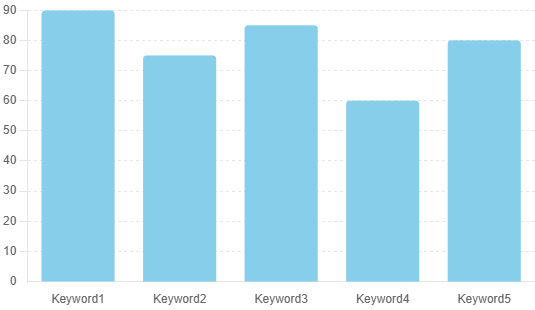URL Structure for SEO: Essential Tips and Best Practices
In the competitive world of digital marketing, understanding the intricacies of URL structure is crucial for optimizing your website’s visibility and performance. A well-structured URL can significantly influence your site’s ranking on search engines. In this guide, we’ll delve into best practices for creating URLs Structure for SEO that drive traffic and enhance user experience.
What is URL Structure?
URL (Uniform Resource Locator) structure refers to the format and organization of web addresses used to access your site’s pages. An optimized URL structure helps search engines understand the content of your pages, improving your chances of ranking higher in search results.
Why URL Structure Matters for SEO
Search Engine Crawling and Indexing
A clean and well-organized URL structure simplifies the process for search engine bots to crawl and index your website, leading to better visibility and higher rankings.
User Experience
User-friendly URLs that are easy to read and understand can improve click-through rates and overall user satisfaction. Visitors are more likely to click on a link that clearly indicates the page’s content.
Keyword Relevance
Including relevant keywords in your URL enhances your site’s relevance to specific search queries, helping you rank higher for those terms.

Best Practices for SEO-Friendly URL Structure
1. Keep URLs Simple and Descriptive
Simplicity is Key
URLs should be straightforward and concise. Avoid using unnecessary words or complex structures. A simple URL is easier for both users and search engines to interpret.
Example:
- Good:
www.example.com/seo-tips - Bad:
www.example.com/123456/seo-tips/890
2. Use Hyphens to Separate Words
Hyphens Over Underscores
When creating URLs, use hyphens (-) to separate words instead of underscores (_). Hyphens are recognized by search engines as spaces between words, making your URLs more readable.
Example:
- Good:
www.example.com/url-structure-seo - Bad:
www.example.com/url_structure_seo
3. Incorporate Keywords Strategically
Keyword Placement
Including relevant keywords in your URL can boost your SEO efforts. However, avoid keyword stuffing. Place the most important keywords near the beginning of the URL for maximum impact.
Example:
- Good:
www.example.com/seo-basics - Bad:
www.example.com/basics-of-seo-for-beginners
4. Avoid Dynamic URLs
Static Over Dynamic
Dynamic URLs with query strings (?id=123) can be harder for search engines to crawl and understand. Whenever possible, use static URLs that clearly reflect the page content.
Example:
- Good:
www.example.com/seo-guide - Bad:
www.example.com/page?id=123
5. Maintain a Consistent URL Structure
Consistency Matters
Consistency in your URL structure helps search engines and users navigate your site more efficiently. Develop a clear and consistent format for your URLs and stick to it across your website.
6. Use Lowercase Letters
Case Sensitivity
URLs are case-sensitive, which means www.example.com/Page and www.example.com/page are considered different URLs. To avoid confusion and potential errors, always use lowercase letters in your URLs.
7. Limit the Use of Special Characters
Clean URLs
Special characters like &, %, $, @ can complicate URLs and negatively impact SEO. Stick to letters, numbers, and hyphens to keep your URLs clean and search engine-friendly.
8. Implement HTTPS
Secure URLs
Using HTTPS instead of HTTP not only secures your site but also boosts your SEO. Search engines favor secure websites, and users are more likely to trust and visit secure URLs.
Advanced Tips for Optimizing URL Structure
1. Breadcrumb Navigation
Enhancing User Navigation
Implementing breadcrumb navigation can improve both user experience and SEO. Breadcrumbs provide a clear path for users to navigate back to previous pages, and search engines use this structure to understand the hierarchy of your site.
2. Canonical Tags
Avoiding Duplicate Content
Canonical tags help prevent duplicate content issues by specifying the preferred version of a URL. This ensures that search engines index the correct URL, maintaining your SEO integrity.
3. XML Sitemaps
Assisting Search Engines
An XML sitemap lists all the URLs on your website, helping search engines crawl and index your site more efficiently. Regularly update your sitemap to reflect any changes or additions to your content.
4. URL Redirects
Proper Redirection
Use 301 redirects to permanently redirect old URLs to new ones. This ensures that any existing SEO value is transferred to the new URL, maintaining your search engine rankings.
5. Monitor and Analyze Your URLs
Continuous Improvement
Regularly monitor your URLs using tools like Google Analytics and Google Search Console. Analyze the performance of your URLs and make adjustments as needed to optimize for better SEO results.
Meta Title and Description
Meta Title: “URL Structure for SEO: Best Practices for Higher Rankings”
Meta Description: “Learn the essential tips and best practices for crafting SEO-friendly URL structures to improve your website’s search engine rankings and user experience.”
Relevant Tags and Entities
- URL Structure
- SEO Best Practices
- Search Engine Optimization
- URL Optimization
- SEO Tips
- Keyword Placement
- Website Navigation
- HTTPS
- Breadcrumb Navigation
- XML Sitemap
Images for URL Structure SEO
Image 1:
Alt Text: “Clean URL Structure Example” Caption: “An example of a clean and simple URL structure for better SEO.”
Image 2:
Alt Text: “URL Structure Best Practices” Caption: “Best practices for optimizing URL structure in SEO.”
Conclusion
Crafting an effective URL structure is a critical component of SEO that can enhance your website’s visibility and user experience. By following these best practices, you can create URLs that are not only search engine-friendly but also intuitive and engaging for your users. Remember, a well-optimized URL structure is a foundational step towards achieving higher rankings and driving more traffic to your site.
Incorporate these strategies into your SEO efforts and watch as your website climbs the search engine rankings, attracting more visitors and boosting your online presence.







